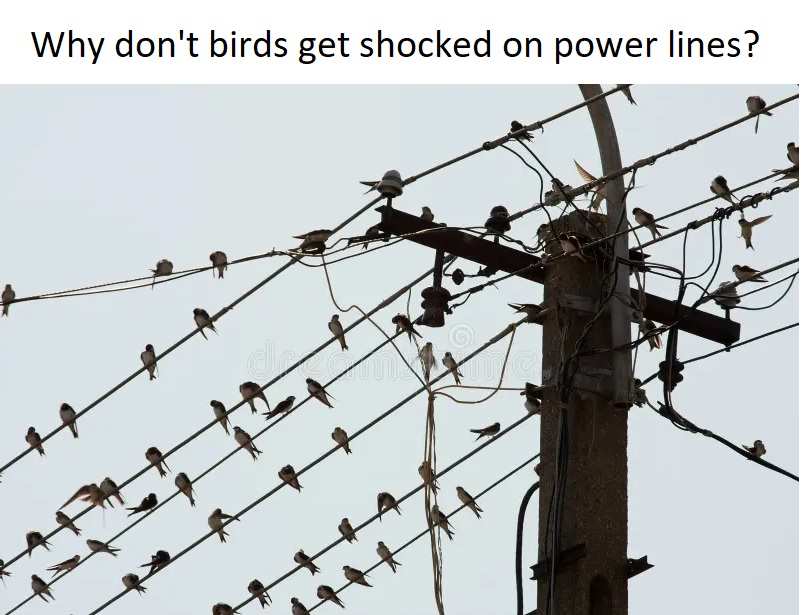Answers:
Birds don’t get shocked on power lines because they do not provide a path to ground for the electrical current. The electricity flows through the wire, and as birds are not in contact with the ground or another conductor, they do not complete a circuit and, therefore, do not experience an electric shock.

Reasoning:
- No Grounding Path: Birds perch on power lines without creating a path to ground, ensuring that the electrical circuit remains incomplete.
- Insulation: The insulating properties of a bird’s body prevent the flow of electricity, as they are not conductive.
- Potential Difference: Birds do not create a potential difference between the wire and the ground, eliminating the conditions for electric shock.
- Air Gap: The air surrounding the bird acts as an insulator, preventing the flow of electricity between the bird and the power line.
- Low Resistance: The resistance of the bird’s body is significantly higher than the resistance of the power line, limiting the flow of current through the bird.
- Feather Insulation: Birds’ feathers provide additional insulation, reducing the likelihood of electric shock.
- Natural Perching Behavior: Birds’ natural tendency to perch without creating a circuit contributes to their safety on power lines.
- Lack of Ground Connection: Unlike humans or animals on the ground, birds do not complete a circuit by touching both the power line and the ground simultaneously.
- Adaptation: Birds have evolved to live in close proximity to power lines without experiencing harm, adapting to their environment.
- Electrical Potential: Birds maintain a similar electrical potential to the power line, preventing the flow of electricity through them.
FAQs
Q: Why don’t birds get shocked on power lines?
A: Birds do not complete a circuit to ground, as they do not provide a path for electrical current.
Q: Are all birds safe on power lines?
A: Generally, yes, as long as they don’t create a path to ground.
Q: Do feathers play a role in protecting birds?
A: Yes, feathers provide additional insulation, reducing the risk of electric shock.
Q: Can humans safely touch power lines like birds?
A: No, as humans provide a path to ground and can complete the electrical circuit.
Q: Is it safe for birds to touch multiple power lines simultaneously?
A: As long as they don’t create a path to ground, it is generally safe.
Q: Why doesn’t the electricity flow through the air to the bird?
A: The air acts as an insulator, preventing the flow of electricity.
Q: Do birds get shocked during storms on power lines?
A: The risk may increase during storms, but birds generally avoid unsafe situations.
Q: How do power lines affect birds’ behavior?
A: Birds have adapted to live near power lines without altering their natural behaviors.
Q: Can birds get shocked if their wings touch the ground while on a power line?
A: If the bird’s body doesn’t complete a circuit, it remains safe, including its wings.
Q: Why do birds prefer power lines as perching spots?
A: Power lines provide elevated vantage points without posing a threat of electric shock.
 Electrical Engineering World Wiring a Brighter Tomorrow!
Electrical Engineering World Wiring a Brighter Tomorrow!


